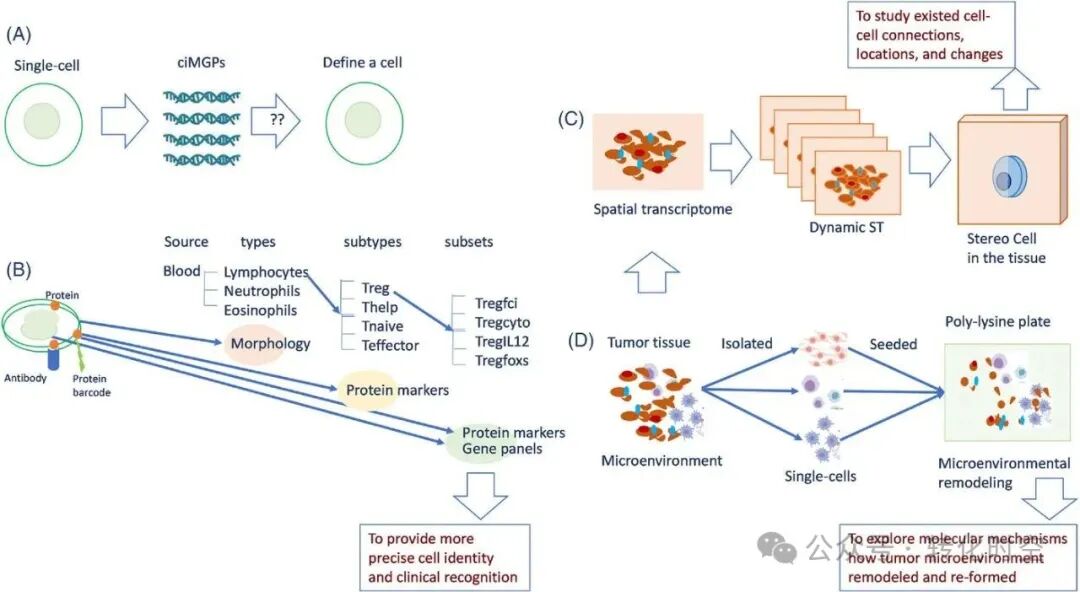用于活细胞研究的新型3D成像技术
| 导读 | 瑞士的研究人员开发了一种进行细胞3D成像的新型显微镜,其可在不对样本进行事先处理的情况下就可以实现对活细胞的观察。 |
显微镜的最大限制就是自身的光线,如果我们想看到一个小于可见光波长的物体就不能利用常规的光学原理;但如果对细胞进行成像的话,问题就显得比较复杂了,因为细胞通常需要事先经过化学处理才可以在显微镜下观察到,而化学处理过程在保存细胞的同时必然也会杀死一部分细胞。近日一项刊登于国际杂志Nature Photonics上的研究论文中,来自瑞士洛桑联邦理工学院下属公司NanoLive的研究人员通过研究开发了一种进行细胞3D成像的新型显微镜,其可以利用类似MRI的技术及全息摄影算法的软件进行结合,在不对样本进行事先处理的情况下就可以实现对活细胞的观察。
这种显微镜名为3D细胞探索者(3D Cell Explore),其将先进的硬件同成像软件进行结合,就可以在数秒内记录整个活细胞的惊人3D图像,同时这种新型显微镜的分辨率要明显高于市场上常规的显微镜,其可以作为一种MRI扫描仪,横跨细胞在不同深处进行拍照,随后这种摄影片将通过全息摄影软件进行调配,而全息摄影软件可以对细胞进行数字化染色,对细胞的不同部位进行标记,最终的结果将得到一个可旋转并进行深入剖析探索的细胞高分辨率3D图像。
目前这种名为STEVE的软件可以下载得到,其可以在细胞中“旅行”,并且允许用户对所扫描的细胞的任何部分进行数字化的“喷涂”,这是因为该软件可以基于名为屈光指数的光学特性,对细胞的不同部位进行自动化地定义。由于细胞中不同的细胞器拥有不同的屈光指数,因此STEVE就可以进行区分,并且以相同或不同的颜色对细胞的不同部位进行数字化“喷涂”。由于这种数字化过程是定量化的,因此此可以无限使用颜色,从而就使用用户对细胞实时的改变可以清楚地观察到,通过这种软件用户就可以对细胞进行实时地数字化修饰。
NanoLive公司CEO Yann Cotte表示,从今天开始,全世界所有的科学家、学生及医生都将可以通过下载STEVE软件实现全彩色的3D细胞之旅,未来我们还将继续更加深入的研究,来开发出更多的细胞成像工具,帮助进行相关疾病的机制及新型个体化细胞疗法的开发。(转化医学网360zhyx.com)
以上为转化医学网原创翻译整理,如需转载,请联系 info@360zhyx.com
转化医学网推荐的新闻阅读:
The major limitation of microscopy is light itself: if we want to see an object smaller than the wavelength of visible light, we cannot use conventional optics. When it comes to imaging cells, the problems compound, since cells often require chemical processing beforehand in order to make them suitable for viewing under a microscope. This processing essentially kills the cell in order to preserve it. An EPFL spin-off company, NanoLive, has developed the 3D Cell Explorer first-ever microscope that allows users to see inside living cells without any prior sample preparation, by using MRI-like technology and proprietary software that uses holographic algorithms.
The microscope is called the 3D Cell Explorer. It combines state-of-the-art hardware with cutting-edge imaging software to record stunning 3D images of entire living cells within seconds and with a higher resolution than any conventional microscope available in the market. The device works as an MRI scanner, taking photographs at different depths across the cells. The photographic "slices" are then recombined using clever holography software that digitally "stains" the cells, labeling its different parts. The result is a high-resolution 3D image of the cell that can be rotated and explored in depth.
The software, called STEVE, is now available for download and can be used to "travel" virtually inside cells. It allows the user to digitally "paint" any part of a scanned cell. This is possible because it can automatically define all the different parts of a cell based on an optical property called the "refractive index". Since different organelles inside the cell have different refractive indices, STEVE can tell them apart and digitally "stain" them with the same or different colors. Because this digital processing is quantitative, it can use a limitless amount of colors, allowing users to explore changes in the cell in real time. Through STEVE, the stains can be constantly modified by the user, saved and reused for other cells.
 腾讯登录
腾讯登录
还没有人评论,赶快抢个沙发